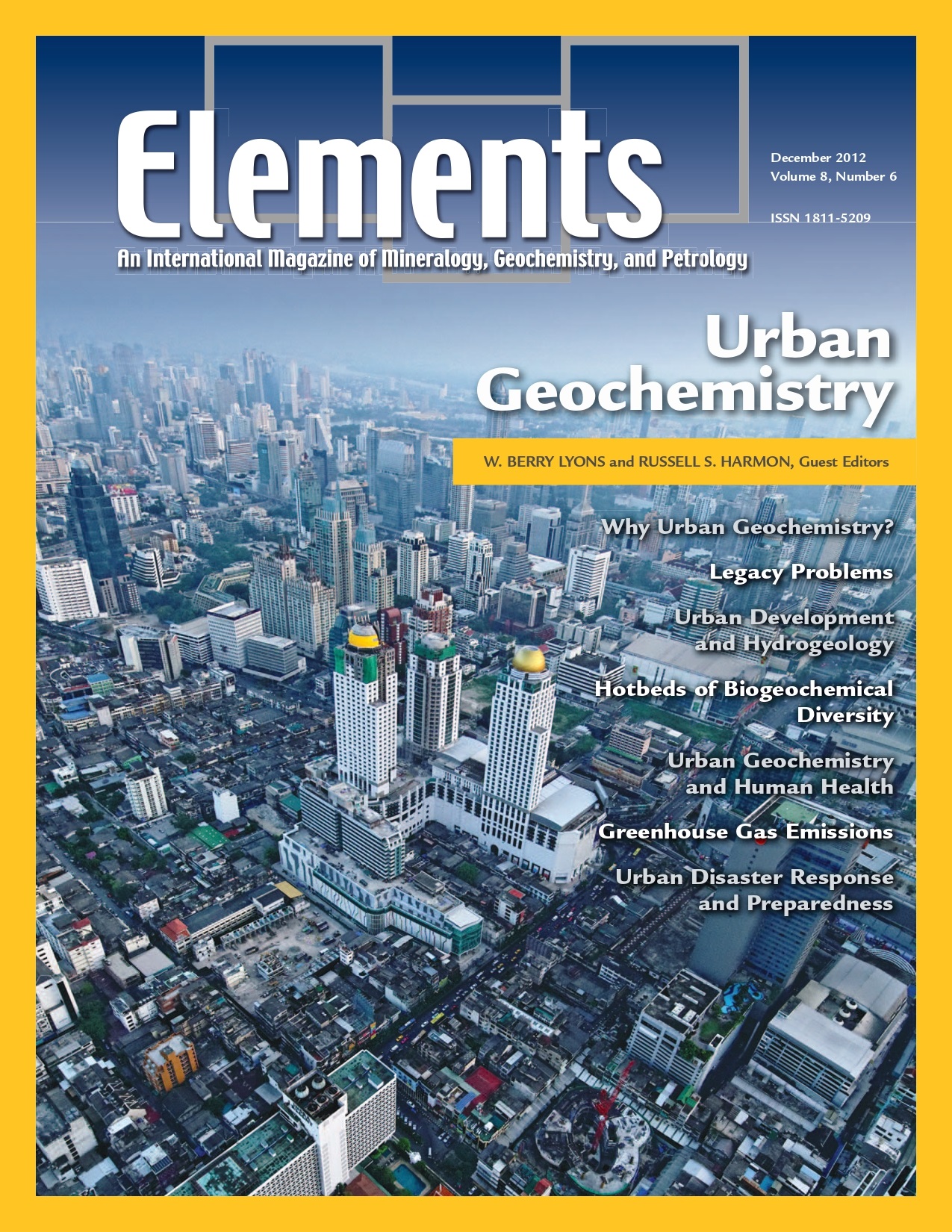
Granitic Pegmatites, August 2012, Vol. 8, No. 4
June 28, 2024
Kaolin, June 2014, Vol. 10, No. 3
June 28, 2024Urban Geochemistry, December 2012, Vol. 8, No. 6
$20.00
By 2030, about 60% of the human population will live in cities. Clearly, anthropogenic activities in urban environments affect geochemical cycles, water resources, and the health of ecosystems and humans globally.
Urban Geochemistry
December 2012, Vol. 8, No. 6
By 2030, about 60% of the human population will live in cities. Clearly, anthropogenic activities in urban environments affect geochemical cycles, water resources, and the health of ecosystems and humans globally. Past practices are still having biogeochemical impacts today, and in many cases remediation is needed. Both natural and manmade disasters greatly change the geochemistry of urban areas. Understanding past impacts can aid in future disaster planning. An increased awareness of the geochemical and mineralogical effects of urbanization on geochemical cycling will aid urban planners in the effort to make urban development sustainable.
Why You’ll Love Elements Magazine:
- Expert Contributors: Articles written by renowned researchers in the field of geoscience.
- Engaging Content: Join a community of readers who are passionate about Elements.
- Exceptional Quality: Each issue is printed on high-quality paper with stunning visuals and detailed illustrations that bring complex scientific concepts to life.
Order your copy of the December 2012 issue of Elements magazine today and explore urban geochemistry.
Related products
-
Arsenic, April 2006, Vol. 2, No. 2
$20.00Arsenic is an element known throughout history as a classic poison. Currently, very small but highly significant concentrations of this element in drinking water supplies are causing massive health problems to many millions of people in some of the world’s poorest nations, and more localised sources related to mining and processing are also a concern.
-
Platinum-Group Elements, August 2008, Vol. 4, No. 4
$20.00The geoscientific and economic significance of the PGE is immense. Due to their extreme siderophile and chalcophile behaviour, the PGE are highly sensitive tracers of geological processes involving metal and sulfide phases.
-
Large Igneous Provinces: Origin And Environmental Consequences, December 2005, Vol. 1, No. 5
$20.00Large igneous provinces record major outpourings of igneous rocks, both on the continents and in ocean basins. Their origin is still vigorously disputed, with models invoking mantle plumes, thermal effects of the lithosphere, and meteorite impacts.




